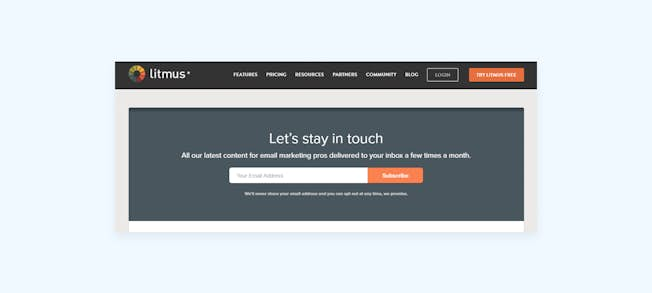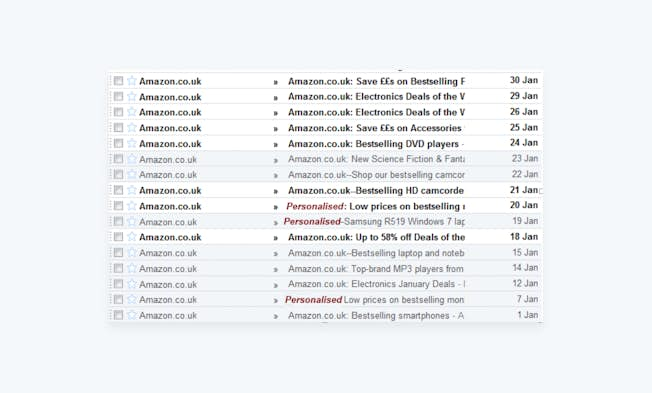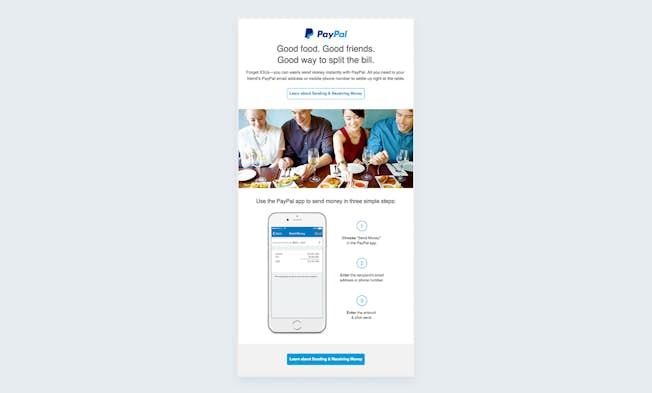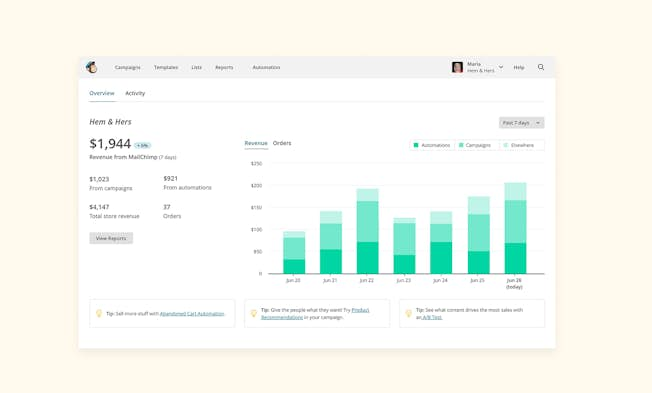Article by:
Dan Hughes (https://digitalmarketinginstitute.com/)
There are many ways to segment and customize your messaging to customers in the digital age, with many platforms or touchpoints to explore. Often, the humble email remains a medium that delivers a significant return on investment (ROI) for businesses across sectors.
Here are some insights that prove the promotional power of email marketing:
- Email marketing offers an average ROI of 3,800%.
- The global email marketing market was valued at $7.5 billion in 2020.
- Four out of five marketers said they would rather give up social media than email marketing.
- 74% of Baby Boomers think email is the most personal channel for receiving communications from brands, followed by 72% of Gen X, 64% of Millennials, and 60% of Gen Zers.
It’s clear that email marketing is worth your time and investment. With this in mind, we’ve done the hard work for you and researched what it is that defines a successful email marketing campaign so you can not only focus on improving your key email metrics such as open rate, clickthrough rate (CTR) and conversion rate, but also the hidden metrics that can give you an edge.
Are You On The List?
Before we get started on sending out emails, we need someone to send them to—prospects that are most likely to engage with what you have to say and offer.
To that end, it is vital to push email signups and to make that process easy. Ideally, you’ll provide a signup box that only requires a user’s name and email address.

You should host signup forms on your website (using a tool like HotJar to refine this user journey), your social channels, and anywhere you have an online presence.
Many retail stores email receipts to grow their email lists, while others offer samples or checkout discounts to those who sign up. Many American stores will take dates of birth to send out birthday emails – many of which contain vouchers.
From there, it is important to set an expectation – does the customer know what to expect from you? Tell them roughly how often you plan to email and what those emails contain. Otherwise, you will not turn that email into the open, a click or a sale.
It is then important to monitor the growth of your list and the rate at which those emails are actually being delivered.
If you don’t know how fast your email list is growing, you cannot measure the success of your email marketing efforts.
Likewise, gathering email addresses that are going to dead accounts is pointless: monitor your delivery rate and ensure that your emails are going to live accounts.
What Are You Trying To Do? And How Do You Do It?
Ross Callaghan, the head of digital marketing with insurance giant AIG, says that the key to good email marketing is deciding exactly what it is you are trying to achieve with your email marketing efforts.
Or, more importantly, what do you want the reader to do with the email? Some emails are pure sales others, like surveys, are for customer data collection.

Whatever yours is for, make sure the mail is focused on that.
“There’s two halves: getting people to open it (open rate) and getting people to click (clickthrough rate). But the key is: Stay focused on what you want the customer to do,” says Callaghan.
But how?
“The main rule I follow is to always test as much as possible: different subject lines, different imagery or marketing messages.”
“For open rates, I personally have seen short subjects are better. One word can be really powerful for getting open, so it can say something unexpected about your brand.”
“The more out there you are, the more open you’ll get.”
“In terms of content, single marketing messages usually increase CTR.”
“Use striking imagery where possible but always, always, always use a call to action.”
What Works in Email, and Why?
Take a look at this email from PayPal. Why does it work as a marketing email?

1. Image choice
The image is striking, evocative, but simple. 64% of email recipients prefer brand communications to feature imagery. Providing relevant and striking pictures without diluting your messaging or causing navigational confusion, graphics, and pictures will enhance your performance.
2. Subject Line
As Ross Callaghan mentioned, sometimes being a bit out there can affect the open rate. People generally aren’t expecting an email from PayPal telling them how to split the money in a social situation. Most people find that process uncomfortable, so it’s a good way to make the email feel less about the product and more about the person.
3. It Adds Value
Even if this email is opened but not clicked through, the reader gains a measure of value. They are walked through the simplicity of the PayPal app and shown a potential use of the product, helping them to keep a lead warm even if they don’t convert the first time. This can be done in many ways – show customers a new product, alert them to a potential saving or show them how to solve a common problem using your product.
4. It Inspires Action
The top and tail of the email direct the reader to “Learn about Sending and Receiving Money”. The email is designed to drive app downloads, but the call to action promises more than that. They are clear and easily seen.
To make the best possible first impression and increase the impact of your marketing efforts, read our guide to writing prospecting emails that actually get replies.
Monitor Your Mails
As with all digital marketing, analytics play, a key role and Callaghan says that it’s the little things that can make a big difference.
“Study your sent history for best times to send the email in terms of when people are engaging the most. This is more important for the open rate than anything else.”

According to a study from Moosend, the best time to send a marketing email is around 9 am on a Thursday (based on an analysis of 10 million email engagements). But, by using an analytics tool, you will discover your brand’s email marketing engagement sweet spot.
Tools like MailChimp give email senders an incredible depth of data about the success of their campaigns. This allows you to test different strategies and work out what works for your customers.
And then? Callaghan says that the key to analytics is to turn opens into clicks and clicks into conversions.
“After you send an email, try to follow up with the user based on what they clicked.”
Segment Your Audience
Did you know? Marketers that use segmented campaigns noted as much as a 760% boost in revenue. That’s pretty impressive.
In addition to taking an analytical approach to your email list and performance monitoring activities, by using relevant data to segment your email marketing customers into different audiences, you can send highly personalized, value-driven communications to the right people at the right time.
Here are some tried and tested ways to segment your audience and improve your email marketing performance:
- New subscribers: Consumers you can target with an incentivized welcome email and offer (access to early bird deals, tailored discounts, product recommendations, and members-only content, for example).
- Inactivity: Dormant customers with active email accounts haven’t engaged with your emails for a while. Here, you can reach out with a personalized deal or incentive.
- Location: Consumers you can target with emails relevant to their locale, culture, and geographically-centric trends or news content.
- Demographics: Customers you can engage with content based on age, sex, political orientation, vocation or occupation.
- Interests: Customers, you can engage with content based on their personal preferences and interests.
- Behaviours: Customers you can craft personalized emails for based on past purchases or brand engagements (connecting on social media, entering a contest, browsing specific product categories, etc.)
Sharpen Up Your Email Copywriting
As with any marketing activity, you want to create content that engages your audience. Your copywriting efforts can make or break your email marketing, so sharpening your word-based skills is important.
Here are five quick email copywriting tips that will engage your recipients boost your performance:
- Make sure your subject lines are clear, concise, and demonstrate personal value. Be direct and use marketing action words where possible.
- Always add preview text to elaborate on your email headline and inspire your recipient to click through. You have between 35 to 140 characters here, so trim any words or phrases that don’t offer the reader direct value or have no relevance to your subject line.
- Use subheadings to break up the email and keep your readers engaged in your content from start to finish. Avoid large blocks of text and make sure that your copy is conversational. Read it aloud and if it doesn’t sound fit for human consumption, go back and make changes until your content reads naturally.
- Steer clear of using CAPITAL lettering or exclamation marks! This will make your content appear shouty or spammy and put your readers off.
- Produce calls to action (CTAs) that create a sense of urgency or provide a clear-cut incentive—such as:
- Hurry. Offer Ends Soon.
- Book Now & Save.
- Get My 10% Off.
- Book Your Place Before It’s Too Late
“Email has an ability many channels don’t: creating valuable, personal touches – at scale.”David Newman
If you’re serious about using email marketing to drive sales and signups, you need to balance user design with what you’re trying to achieve.
Don’t forget it’s important to find the sweet spot between adding value and asking for something, and a well-structured email campaign will deliver value to the customer and ROI for the business.